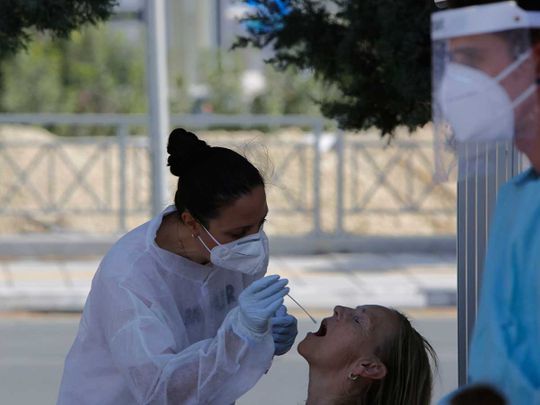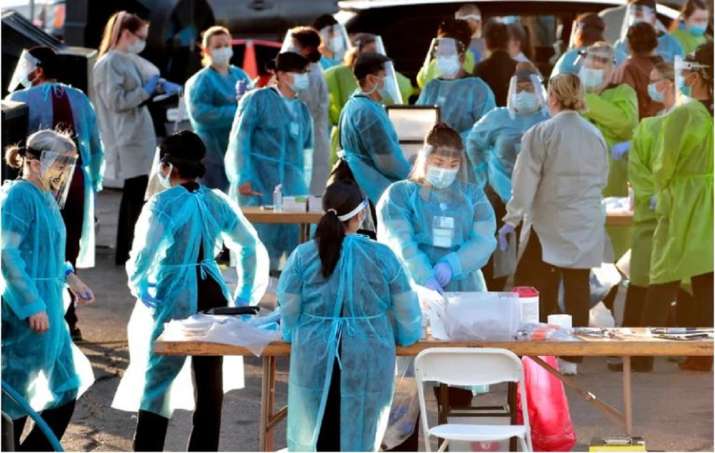As the pandemic progresses at the beginning of the new year, experts are now considering the possible evolution of the Omicron variant, and Covid in general, in becoming an endemic disease. That is, the Omicron variant may well become a disease of low severity, and widespread as the flu. Unfortunately, this is not the only possible scenario in development. As a matter of fact, it is now time to consider what happens if the Coronavirus infection combines with other diseases, and how two different variants may interact in the same organism.
In recent days, the media are starting to focus on Flurona, an infection coming from the combination of Coronavirus and the flu. The first case was registered on the 30th of December in Israel, which is among those countries leading the good fight against the pandemic. It is also the country that provides insight and forecast for the rest of the globe, given its early schedule in vaccinations.
The Flurona case comes from a pregnant unvaccinated woman that, despite her symptoms, is not at high risk. The discovery of Flurona came just in time, permitting experts to acknowledge this new double disease. As a matter of fact, Flurona cases are difficult to diagnose, mostly because of the symptoms: both Covid-19 and influenza have a common basic symptomatology, such as cough, fever, headache, sore throat and muscle aches.
As explained by Dr. Arnon Viznihatel, director of the gynecologic branch of the hospital located in Petah Tikva, just east of Tel Aviv, the combined infection of Covid and influenza is a bit strange. In medicine, it has always been said that a virus that causes one disease prevents development of another from a different virus. The explanation for the current atypical situation could lie in the fact that Covid causes a defect in interferon production, which would pave the way for another virus — in this case, the flu virus. In the meantime, the director explains, Israel is registering many cases of pregnant women with the flu, an event that should lead to further controls.
Flurona should not be a complete surprise to experts and civilians, however. At the beginning of October, the media were already talking about the possibility of the so-called Twindemia, a combined pandemic of flu and Coronavirus. At that time, the alarm was raised in order to avoid Twindemia and to boost anti-flu vaccination during November. As the facts now show, the alarm has not been taken completely into account. Despite the fact that Flurona, or Twindemia, has mild symptoms that pose risk only in fragile individuals, the real risk is brought about by a possible new saturation of hospitals, which could throw the world back to one year ago, when people suffering of other diseases could not be treated due to the health systems’ focus on Covid.
A different, and probably still incomplete, story has to do with the combination of Delta and Omicron variants in the same organism. A brand new diagnosis, first registered in Cyprus on the 8th of January by the University of Cyprus, has been discovered in 25 individuals. At the moment, we know little about the new strain. It is not possible to forecast whether it could be more pathologic (like Delta) or more contagious (like Omicron), and how it will interact with the current wave of Omicron.
As to the interaction of “Deltacron” with Omicron: the spread and virality of Omicron’s wave is not likely to be ended by Deltacron, which would have less capacity of infection with respect to Omicron. On the other hand, it is hard to find a response when the nature of the strain is not still clear.
Still, we know that infections are more recurrent in hospitalized patients than in non-hospitalized ones. Researchers at the Imperial College of London are suggesting that the Deltacron found in Cyprus is just laboratory contamination. According to the researchers, it takes several weeks or months for recombinants to appear, while we’ve been in the Omicron wave for just a couple of weeks. Most importantly, the nature of the strain, if confirmed as such, will be confirmed and defined only if several sequencing labs will find the same recombinant or homoplasy in different sequencing runs.











